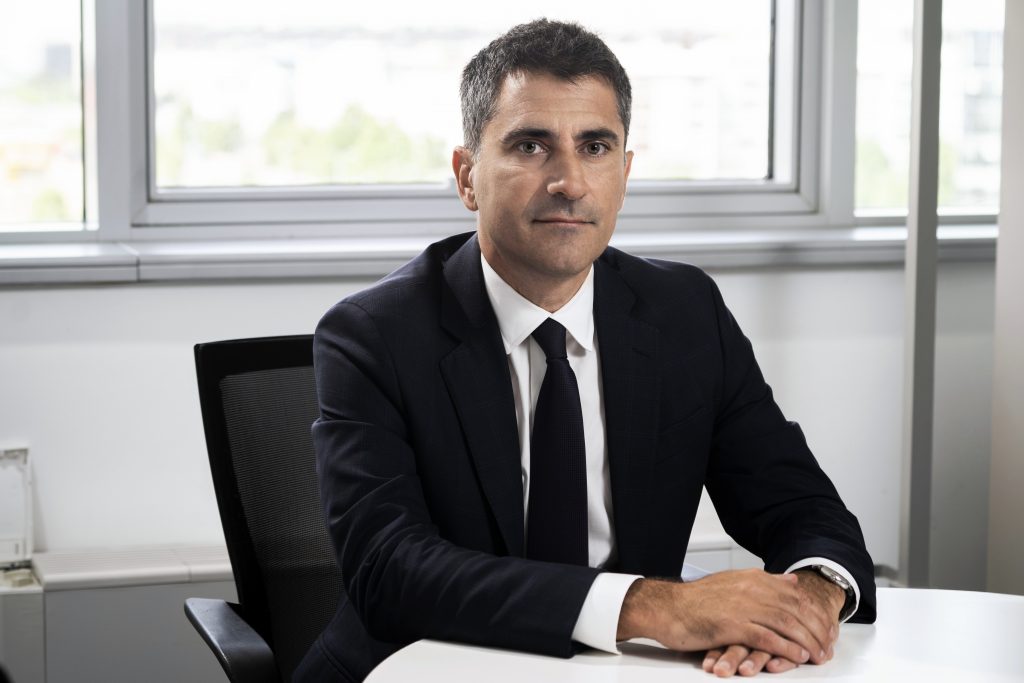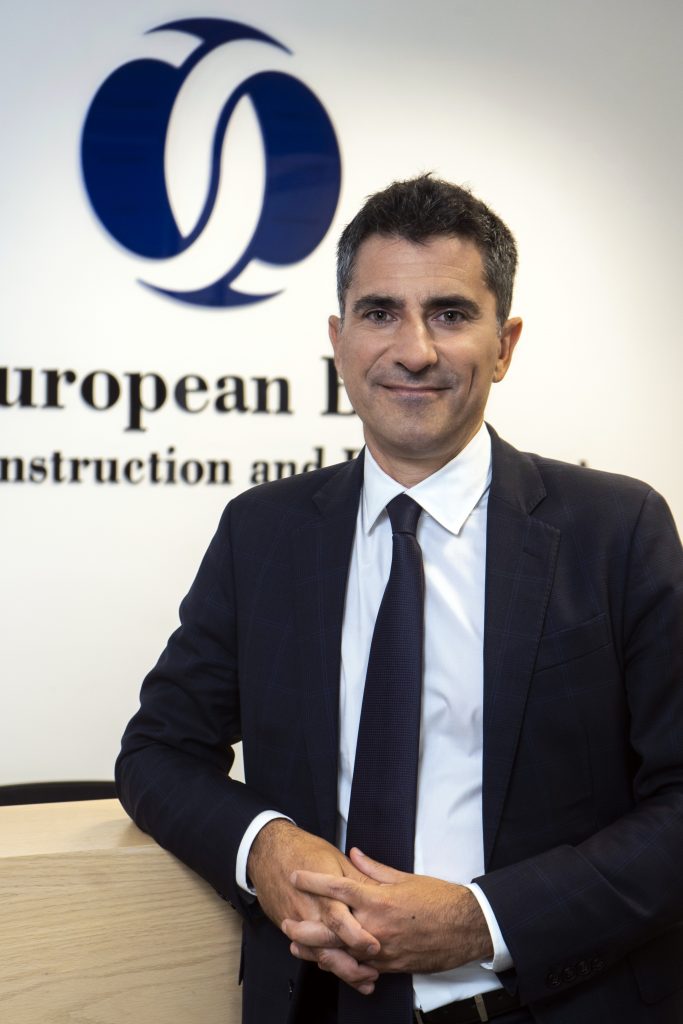We work towards building more competitive and sustainable economies in Serbia and in the rest of the Western Balkans
In his interview for the magazine Diplomacy&Commerce Matteo Colangeli, EBRD Director for Western Balkans talked about the current state of the Serbian economy and EBRDs plans for Serbia and Western Balkans. He explained the significance of economies which are powered by greener energy systems and investments in digitalization. He also said that the Serbian economy has shown resilience in time of uncertainty.

EBRD invested well over a billion euros in the Western Balkans last year, evenly spread between private and public sectors and across a total of 89 projects. Around 35% of this amount went to investments in environmental infrastructure, renewable energy, circular economy, and resource efficiency. A major landmark project in Serbia was to build sanitary landfills and increase recycling, as well as investments in rolling out broadband in rural areas and upgrading irrigation facilities
What are your impressions of Serbia after spending almost a year in the position of the Director of the EBRD Office for the Western Balkans and Serbia?
Serbia is a priority country for the Bank, consistently among our top ten in terms of business volume, and a country where we have ambitions to grow our presence and activities further. As such, it is an honour for me to be leading our team in Belgrade. During my short time in Serbia, I have been impressed by the resilience of the economy during the crisis and by the depth of ongoing investments in upgrading the country’s infrastructure. I think there are exciting opportunities for Serbia in the years ahead. At EBRD, we are committed to support our partners in the public and private sectors to make the most of them.

After you were appointed to this position, you said that the EBRD’s focus would be on the economic recovery in the post-pandemic period. However, given that the pandemic has been lasting longer than originally anticipated, what are your current plans? What are the EBRD’s plans in Serbia and the region?
We work towards building more competitive and sustainable economies in Serbia and in the rest of the Western Balkans. Economies which are powered by greener energy systems, which are more efficient in the way they use and recycle resources, and are inclusive in creating opportunities, particularly for younger generations. Supporting investments in digitalization will certainly be an important enabling factor in reaching these objectives, as it will be nurturing the promising technology ecosystems that are developing in the region, and particularly in Serbia. But the overarching priority for EBRD across the Western Balkans will be accelerating the green economy transition, both at the level of infrastructure and energy systems and in terms of investments by the private sector.
“The overarching priority for EBRD across the Western Balkans will be accelerating the green economy transition, both at the level of infrastructure and energy systems”
We are committed to continue working with authorities and business communities across the region to deliver on this agenda, by making available finance and know how. In the years ahead, I expect a growing share of our public sector investments to be in environmental infrastructure, railways, and energy efficiency. We also want to expand our direct financings to corporates, both local entrepreneurs and foreign direct investors, again with a view to greening their businesses. And, of course, we will work to scale up renewable energy, including by creating supportive regulatory frameworks and competitive processes to allocate capacities and deliver the most efficient outcomes for the energy systems of the region.
Do you think that the Serbian government is coping well with the challenges posed by the pandemic?
The Serbian authorities adopted a range of measures over the past two years to help shield the economy from the impact of the pandemic. In my view, the support was timely, broad and sizeable, delivering strong support to businesses and households. This softened the economic contraction in 2020 and supported the robust recovery last year. Importantly, authorities also raised public capital investments, as part of the response to the crisis. Addressing infrastructure gaps not only supports the immediate recovery but also helps boost the longer-term growth of the economy. Going forward, the policy mix will need to continue being fine-tuned to reflect the changing economic realities, such as narrower fiscal space, and strengthen the resilience of the economy to future shocks, but also to take advantage of transformational trends that have come to the forefront during the pandemic such as the digitalisation and the re-organisation of global supply chains.
What is the current state of the Serbian economy?
The economy has shown resilience in time of uncertainty, recording stronger than initially expected output growth over the last year following a relatively mild contraction in 2020. Recovery has been broad-based, led by activity in domestic trade, construction and manufacturing sectors. Private consumption has also been recovering strongly and so have investments and exports. Overall, the economic output is growing at a robust rate. However, Serbia is not immune to global vulnerabilities such as elevated inflation, tightening of the fiscal space on the back of large interventions and uncertainty related to the future dynamics of the pandemic and external environment conditions.
What is Serbia’s position in relation to other Western Balkan countries?
Serbia has been among the countries in the region that weathered the pandemic better, by virtue of the structure of its economy and the effective measures deployed by the authorities. What really stands out, in my view, is the country’s continuing success in attracting foreign direct investment, with Serbia accounting for the lion share of the Western Balkans total, particularly in manufacturing and services. I believe Serbia and the entire region are to benefit materially from closer economic integration and from better transport connectivity among the countries. The investments Serbia is making in roads and rail are highly important in this respect. On a broader level, the region’s approximation to the EU remains the main catalyst for economic development and better living standards. Serbia’s opening of negotiations on new EU accession chapters last year is a noteworthy success and positive news for the entire region.
Could you tell us more about the EBRD’s investments in the Western Balkans in 2021?
We invested well over a billion euros in the Western Balkans last year, evenly spread between private and public sectors and across a total of 89 projects. Around 35% of this amount went to investments in environmental infrastructure, renewable energy, circular economy, and resource efficiency. The marked increase in green investments relative to 2020 underscores our commitment to the region’s green economy transition, which remains our first priority. The year was characterized by a number of landmark projects. In Serbia, these included a major regional waste management program to build sanitary landfills and increase recycling, as well as investments in rolling out broadband in rural areas and upgrading irrigation facilities.
“Our current forecast projects 6.5% GDP growth in 2021 on the back of a consistently strong recovery throughout the year”
In Albania, we financed an innovative floating solar power plant, as well supported the resilience of the financial and energy sectors. We continued to support major road links in Bosnia and Herzegovina, Montenegro and North Macedonia, as well as much needed environmental infrastructure in Kosovo. Across the region, we strengthened our network of green cities with a number of projects in energy efficiency, district heating, and local transport. The majority of our business in the private sector continued to be primarily channelled through local banks, including with risk sharing, trade finance, and facilities supporting green investments by SMEs, residential energy efficiency, and access to finance for female entrepreneurs. The EBRD’s cumulative investments in the region reached nearly 15.3 billion euros to date.
What is your forecast for the Serbian economy?
Our current forecast projects 6.5% GDP growth in 2021 on the back of a consistently strong recovery throughout the year. We expect economic growth to moderate to 4.3% in 2022, moving closer towards the long-term growth rate. Foreign direct investments have been robust in the past decade, which bodes well for future growth, and risks to the forecast remain balanced. Overall, Serbia is in a good place to advance the structural reforms which would boost long-term growth and ensure its sustainability. These include reducing the economy’s energy intensity and increasing the share of renewables, as well as accelerating digitalization and deepening access to finance for business through capital markets development. Continuing to improve the governance of state-owned enterprises would also support resource efficiency and rising productivity in the economy.